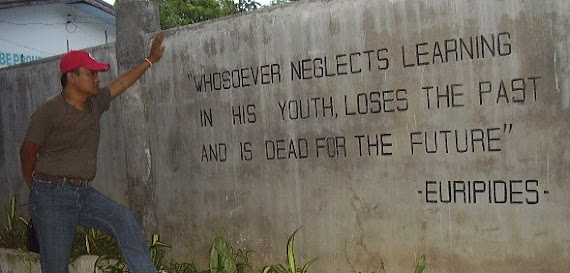The TV ad is very helpful especially for a parent like me who has two teenage children. Almost all of us now are familiar with the lines, “Sabi ng tropa, ang tunay na lalaki ay binibinyagan muna bago magpakasal” and “Ang tunay na lalaki ay marunong maghintay.” Indeed, the message is getting more meaningful every time we watch the commercial which is actually a component of the Lucky Me! advocacy campaign called “Kainang Pamilya Mahalaga". It aims to encourage parents to frequently eat dinner with their children and be involved in their lives. Click here for further information.
Allow me to have a clarification and a confession. What I will be declaring in this entry are not mine alone but taken from the book “The Ten Commandments: A Modern Interpretation” by Prof. Theodor Herr and translated from German by Fr. Leo Muehl and published by the Divine Word Publication in 1995. Second, when I was young, the succeeding topic is no big deal for me.
Pre-marital sex is very prevalent today and as if already the “rule of the thumb” and no longer considered as forbidden but propagated- especially by the macho culture- as a desired aim. New norms more or less sound like this: Do not suppress the sexual instinct but let it free, let it soar high and burst it freely and live it fully. People of today, not only the young ones but even their parents, believe that self-realization and even freedom can fully be achieved by living to one’s (sexual) wishes and to them, restraining human desire is inhuman and repressive. Of course sexual desire is part of human being’s existential condition and disposition; it is the expression of love. But all human desire, not only those are sexual, at the same time, is an ambivalent phenomenon. It can take on destructive forms and degenerate into unrestrained sexual passion, into greed of possessing things and people into self-destroying desire for pleasure.
The book pointed out with precision: “Human beings obtain sovereignty in the use of her/his freedom, not by full consent giving in to momentary feelings, to spontaneous wishes and instinctive impulses. On the way to full human self-realization, the way of control and cultivation of the forces cannot be by-passed. It is not a question of body-hostile suppression but a liberating culture of sexuality. But this cannot be obtained without a prudent asceticism that mean, without self-renouncement, without hygiene of the imagination and without discipline.” To us grown-up and mature people, the author, Prof. Herr, has this to add, “He who keeps this truth from the young, seeking men (who are still on the way), has done them bad service.”
The way I see it,the message of that TV ad is this: “Let you not be dominated by you desires and passions! Do not indulge yourself to a thing so entirely that afterwards you cannot get rid of it, thus losing your freedom.” I'm sure I am right this time for I've already been wrong once in my life.
At least I know now that to wait for the right time is a big deal because being in a hurry is a mortal enemy of genuine enjoyment. …








